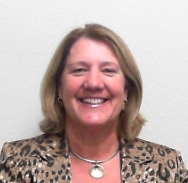Like many risk managers, the City of Suffolk’s Donna Vogel never has a “typical” day.

“The last few weeks I’ve been working on a safety policy about confined space,” said Vogel. “The week before I was working on the 1095-C forms required for submission by the Affordable Care Act.”
As the Risk, Benefit and Wellness Manager for the City of Suffolk, Vogel may be working on different pieces of subject matter from day-to-day, however, she sees them as intertwined and connected.
“Risk management isn’t just insurance – employee benefits, wellness programs and safety programs all impact each other,” said Vogel. “We look at it as a whole – and I’m able to impact many different aspects of the organization by looking at these in totality.”
For example, Vogel pointed out that workers’ compensation is highly impacted by the status of an organization’s wellness program.
“If an employee becomes injured, which we hope our safety program prevents, but if they do – their outcome and ability to recover is greatly impacted by how healthy and well they were before the injury,” said Vogel.
In fact, Vogel’s background is in wellness. She worked for the City of Norfolk for 27 years, retiring and coming to the City of Suffolk two years ago. In Norfolk, she worked in parks and recreation and then served as the city’s wellness coordinator for eight years, and finally overseeing the safety, benefit, and wellness program as an HR manager. She has an undergraduate degree from Slippery Rock University in Pennsylvania, as well as a master’s degree in exercise science and wellness from Old Dominion University.
“The wellness program has such a strong connection to our benefits program and slowing down the rising costs of benefit programs by keeping employees healthier in all areas,” said Vogel.
Preventing workplace injuries and increasing employee well-being all contribute to slowing down the costs to the organization in terms of healthcare, workers’ compensation coverage, and lost productivity.
Total Safety Management
Recently, the city implemented the concept of Total Safety Management, which focuses on involving everyone in the organization at all levels, from upper management to the entry level employee.
To implement this, they created a “Low-Risk Safety Team” and a “High-Risk Safety Team.” The high-risk team is composed of five departments with the top utilization of resources and insurance – fire, police, public utilities, public works and recreation. The low-risk team is comprised of all remaining departments such as human resources and information technology.
The thinking is that these groups may have very different exposures and this is a way to “meet them at their needs.”
For the high-risk team, Vogel presented data on past claims and injuries so that managers could see the big picture of where each department stood in terms of utilization of city resources. Now that the teams have a big-picture view of where they are, they can work on creating policies and procedures to guide them on reducing exposures and losses.
“Providing these teams with the data and helping them see how they can improve can begin to develop that culture change toward focusing more on safety,” said Vogel.
Developing a safety culture
The number one thing Vogel recommends for working to create a culture of safety is to get buy-in.
“It’s the most important thing, and it’s also the hardest thing.”
She suggests utilizing resources already at your disposal, such as data and history. Utilizing reports on past losses and impacts on the workforce can help tell the story of how implementing an effective risk-management and safety-focused culture can help save money and losses in the long-term.
“Data tells a story – you can use that to tell your organization’s story and tell it to management to help drive the buy-in,” said Vogel. “Plot out what the history looked like and what the future could and should look like.”
“I’m fortunate to have a city manager and HR director who are understanding of the big picture.”
She also recommends partnership-building, as well as writing down goals and objectives and reviewing them quarterly to re-assess and update.
Additionally, the resources and services provided by VML Insurance Programs (VMLIP) can help. When Vogel first came to Suffolk she realized that the VMLIP Online University didn’t have training on some of the topics she was looking for.
“The staff at VMLIP listened to me, shortly after that they went out and got the resources we needed,” said Vogel. “I appreciate that.”
For more information on the City of Suffolk’s risk management program, join VMLIP staff and members at the 2016 VMLIP Annual Meeting May 13 at The Place at Innsbrook. Registration information is located here.


